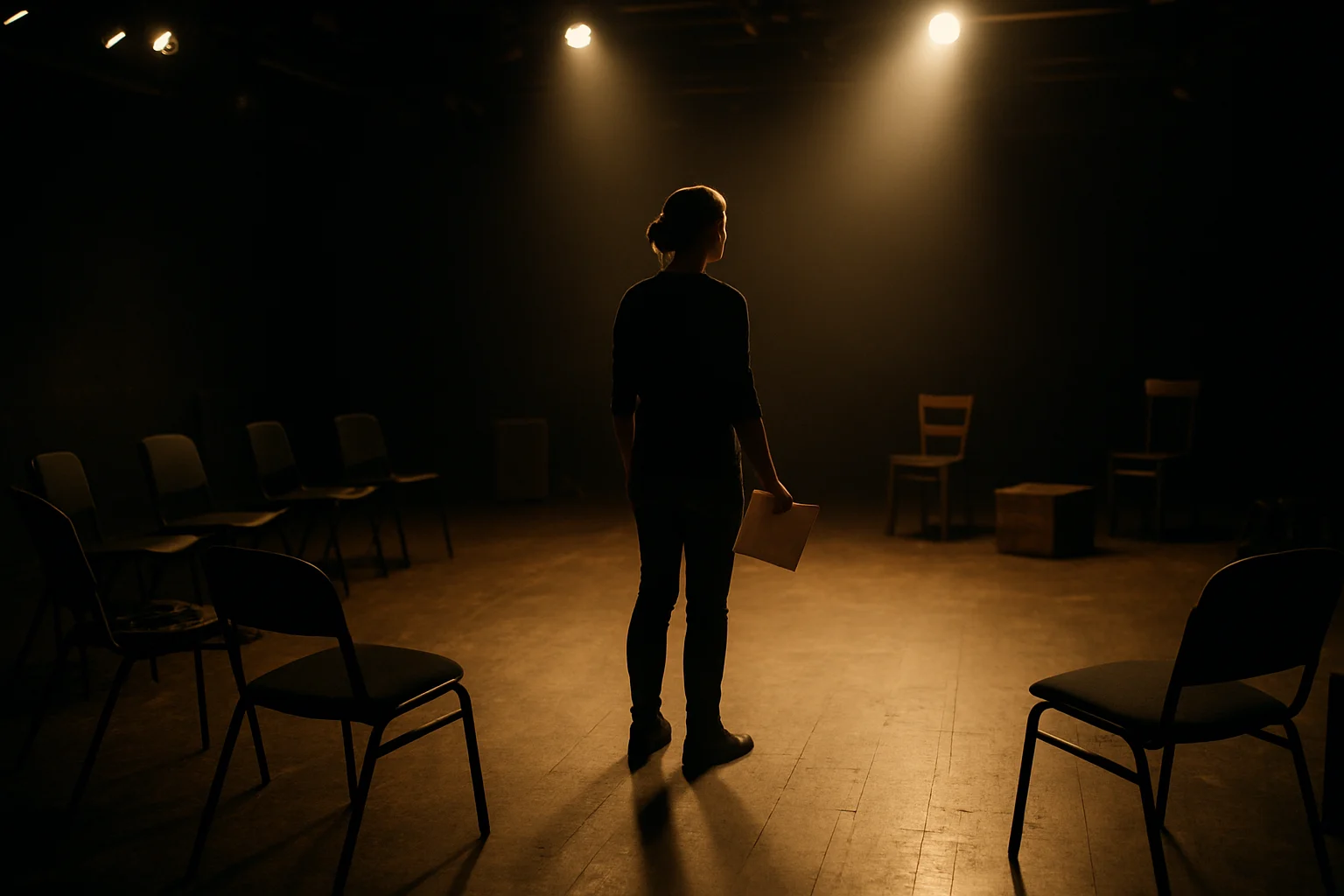
In this week’s edition, I’m continuing my discussion about show stops and emergency situations. Last week, I discussed how to establish standard operating procedures for responding to emergency situations and technical errors. When the show cannot go on due to an artist injury, a technical issue, or unforeseen circumstance, we must understand how to clearly communicate so that the team can respond quickly and safely. Our communication can change the tone, efficiency, and accuracy of how the show stops and getting restarted.
Stopping the Show
Although we’ve heard the saying “the show must go on,” there will be times when you must stop a show for various reasons. The most common cause is a technical malfunction and human error. Still, emergency situations can occur, perhaps with a performer onstage or with an audience member, and in rare cases, other factors that are entirely out of our control, such as weather. These are some steps you can take to ensure that stopping a show goes smoothly and safely. Because safety is one of the most important aspects of being a Stage Manager in any context, so we must be great communicators to help maintain safety.
Communication is a powerful tool and asset as a leader when we learn the anatomy of what it means to be a good communicator, how to adapt, and why it’s so important. Everyone knows the feeling when the way someone speaks to you feels productive and respectful and when it doesn’t. How we communicate in a high-stakes situation becomes even more important; the skills we build as communicators when we aren’t in a stressful crisis will allow us to move through a show stop with productive and clear communication.
Setting the Scene
When something happens in the show that creates everything to come to a halting stop, you’ll either see it happen on stage, or someone will say something on headset (or comms) that there is something wrong. We cannot continue, or you might get a radio call from front of house or someone in administration. Not every issue will stop the show, but when anyone does not feel good about continuing or cutting an act in the middle of a show has never been done, it’s always best to err on the side of caution and be safe rather than trying to keep the show going.
The first thing I do as a show caller is notify everyone on headset that we will stop the show in addition to radioing to front of house and the senior management onsite that the show is stopping; then I start asking questions. Questions about the issue that might be occurring so I can start assessing what impacts that will have for the remainder of the show and thinking ahead about where we can restart. Every organization has a slightly different set of protocols for communication regarding who needs to be informed.
With technical issues, the headset chatter can be chaotic at times and with a lot of people trying to solve an issue. I check in with the stage management team to ensure they know what we need to do to get the show up and going again…what happened? Do we need to meet with artists to talk through any major changes, making pages backstage, etc. Conversations with the stage management team are often overlapping with problem-solving about what occurred in the show and how that will impact the rest of the show.
Here are some things to think about:
- Once you decide you stop the show, discuss with everyone how to stop the show. At times this might be right away, and in other situations, stopping it immediately could cause more harm or injury, such as when a performer is flying in the air. At times, whatever is coming up in the show is where the issue is, so continuing an act to the end and then stopping the show could be the best course of action.
- Figure out how the lights, sound, video, special effects, musicians, automation, and rigging should be stopped and what they need to all coordinate together. Most of the time, departments are telling the show caller what they need and what is safest and easiest for them to stop.
- Contact Front of House, Company Management, and/or Technical Directors who are on site to let them know what happened and that the show is stopping. This allows them to begin coordinating on their end with the audience and/or box office.
- After touching base with all the departments, tell the team when the show will stop and in what sequence everything should happen. It may not be very complicated, but talking through what will happen before it happens is important so that if someone has an objection about the sequence, they can chime in and say, “Actually, can we do this after that because of…” and then a better, safer plan will be in place. Hopefully, your team has taken the time to do a risk assessment and set up standard operating procedures so that the thinking is done ahead of time for most situations; something is bound to happen that hasn’t happened yet.
Consider what to do if you can restart the show:
- After stopping the show and assessing what might be affected by the show, start thinking about how to restart the show, if possible. If an injury has happened on stage, that might impact whether the show continues. Check-in with your on-site resident director or whoever oversees the artistic side. If you are that person, make your best judgment based on the morale of the cast, crew, and audience.
- If whatever technical issue that occurred affects more elements in the show, discuss with your Stage Management team what is happening on stage and backstage. What needs to be tracked to where, do things change sides based on alternative staging, or are things cut altogether because of how the staging changes?
- Start setting up what cue every department needs to be in before starting. Tell the departments on stage where things need to move like scenery, props, costumes, quick changes, etc.
- Finally, ask how much time it will take to restart. Get a realistic time from the affected departments and stage management on deck for the show to resume. Be sure to communicate this to Front of House and Senior Management so they are in the loop.
Consider what needs to happen if the show will not restart:
- As soon as it is decided that the show will not go on, either by Senior Management, the Artistic Director, or the Calling Stage Manager, a major technical malfunction that will not allow the show to continue, and in rare cases whether that puts everyone in danger, immediately tell everyone on headset and ask the Stage Managers on deck to communicate with the cast and crew backstage.
- Tell Front of House that the show is not continuing so that they can be ready to evacuate the audience from the theatre. There are usually plans in place for evacuating an audience for more routine issues like fire alarms, so it should be straightforward. Something to think about is having crew near the stage entrances so people do not try to go onstage, which could cause another injury.
- Depending on the situation, there might be a pre-recorded announcement that can be played. In other cases, the Calling Stage Manager might need to make live announcements with the God microphone. Have something prepped so you can calmly communicate so it is clear for everyone.
Remember your self-care:
These situations can take a toll on our emotions, minds, and body. Take care of yourself after a stressful situation like a show stop, whether it is something that has happened before or an emergency. Don’t avoid what you went through emotionally, mentally, and physiologically.
Conclusion:
Using our communication is a powerful tool as a leader, and being a good communicator creates the feeling of safety. The more we practice and hone the way we speak to colleagues in regular situations, it makes room for better communication in high-stakes situations. Remember that we aren’t doing rocket science, we are creating art, and our communication can create space for productive conversation.



